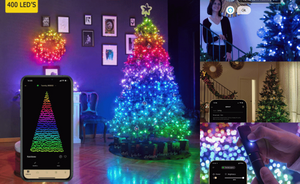It's a dark, clear night.
You step outside and look up at the blanket of stars above you. You can't help but wonder what's out there, beyond our little blue dot.
With a telescope, you can explore the universe from your own backyard!
But with so many different types and models of telescopes on the market, how do you choose the right one for your family?
1. Decide What You Want to See
The first step in choosing a telescope is deciding what you want to see with it. Are you primarily interested in planets and moons?
Or do you want to be able to see distant galaxies and star clusters?
The answer to this question will determine what type of telescope you need to look for.
Refractor telescopes are best for observing planets and moons, while reflector telescopes are best for observing distant objects in deep space.
2. Consider the Speed
Another important factor to consider when choosing a telescope is the speed of the optics.
The speed of the optics is indicated by the "f-number" (for example, f/4, f/5, or f/6).
The lower the f-number, the faster the telescope. For instance, an f/4 telescope is faster than an f/5 telescope.
3. Look at the Aperture
The aperture is the diameter of the main lens or mirror in a telescope.
It's important to choose a telescope with a large aperture because this allows more light into the instrument, which results in brighter images.
If you're interested in observing distant galaxies and nebulae, look for a telescope with an aperture of 8 inches or more.
For planetary observations, an aperture of 4 inches should be sufficient.
4. Consider Portability
One final factor that you'll need to take into account when choosing a telescope is portability.
If you plan on doing a lot of travel observing, then you'll want to choose a small telescope that can easily be packed up and transported.
However, if portability isn't a major concern for you, then you can opt for a larger telescope that will provide better performance but may be more difficult to transport from place to place.
5. Setting Up Your Telescope
Once you've selected the perfect telescope for your family, it's time to set it up!
First, find a level spot outdoors where you'll be able to set up your tripod (if your model doesn't come with one).
Make sure that there are no trees or buildings nearby that could obstruct your view. Next, assemble your telescope according to the instructions that came with it.
Once everything is assembled, point your telescope towards an open area of sky and start exploring!
There are so many different types and models of telescopes on the market today that choosing the right one for your family can feel like a daunting task!
But by following these simple guidelines—deciding what you want to see; considering the speed; looking at the aperture, and thinking about portability—you'll be sure to find the perfect match for your family's stargazing needs!
And remember: once you have your new telescope set up, make sure to point it towards an open area of the sky so that you can start exploring the universe!
If you're looking for the best telescopes for kids, look no further!
We've gathered a great selection of telescopes perfect for young astronomers.
Click the link below to browse our selection, and find the perfect telescope for your little scientist!










